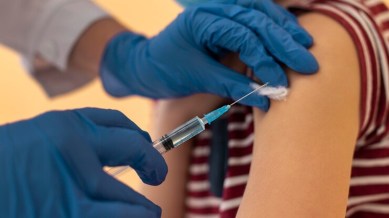📣 For more lifestyle news, click here to join our WhatsApp Channel and also follow us on Instagram
Meghalaya boy contracts rare vaccine-derived polio infection; understand what it is
Though India's polio-free status remains intact, the West Garo Hills area, where the case was identified, has heightened its alert level to prevent further spread.

The recent detection of a polio case in a two-year-old child from Meghalaya has sparked concerns. While the case was determined to be vaccine-derived, meaning it originated from a weakened poliovirus used in the vaccine, health officials are urging caution.
Though India’s polio-free status remains intact, the West Garo Hills area, where the case was identified, has heightened its alert level to prevent further spread. Let’s first understand what the virus is before we go about protecting from it.
monthly limit of free stories.
with an Express account.
Dr Narendra Singhla, Lead Consultant – Internal Medicine at the CK Birla Hospital, Delhi, explained that vaccine-derived polio is a rare strain of the poliovirus. “It’s called ‘vaccine-derived’ because it’s caused by the weakened form of the virus found in oral polio vaccines (OPV). In rare cases, the weakened virus can mutate and spread, causing paralysis.”
The weakened virus used in the OPV mutates and regains its ability to cause disease. This happens rarely and typically in settings with low vaccination coverage and inadequate sanitation. Here’s a breakdown of the process:
- Mutation: The live attenuated virus in OPV can mutate over time. In very rare cases, these mutations can lead to a virus that behaves more like the wild poliovirus, capable of causing paralysis.
- Transmission: In communities with low vaccination rates, the mutated virus can spread among unvaccinated individuals, leading to outbreaks of polio.
Types of vaccine-derived polio
Vaccine-derived polio is classified into several categories:
- VDPV Type 1, 2, and 3: These refer to the different strains of the poliovirus. Each type corresponds to one of the three wild poliovirus types originally included in the OPV.
- Circulating Vaccine-Derived Poliovirus (cVDPV): This occurs when the mutated virus spreads within a community.
- Ambiguous Vaccine-Derived Poliovirus (aVDPV): This term is used when the origin of the virus is unclear, making it difficult to determine whether it came from the OPV or another source.
Who should be concerned about it?
Dr Singhla said the people who haven’t received their recommended doses of polio vaccines, especially in areas with low vaccination rates, should be careful. To stay safe from vaccine-derived polio, it’s essential to receive your recommended doses of polio vaccines.
The emergence of vaccine-derived polio presents a challenge for global polio eradication efforts. To address this, several measures are taken:
- Switching to IPV: Many high-income countries have transitioned from OPV to IPV (inactivated polio vaccine) to eliminate the risk of vaccine-derived polio. IPV does not carry the risk of causing vaccine-derived polio since it contains killed virus particles.
- Enhanced Surveillance: Monitoring and surveillance systems can be strengthened to quickly identify and respond to any cases of vaccine-derived polio.
- Vaccination Coverage: Ensuring high vaccination coverage in all communities is crucial. The more people who are vaccinated, the less chance there is for the virus to mutate and spread.
📣 For more lifestyle news, click here to join our WhatsApp Channel and also follow us on Instagram